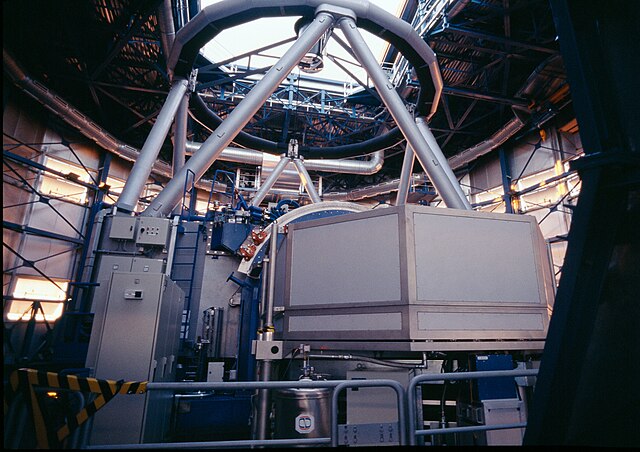Absorption spectroscopy is spectroscopy that involves techniques that measure the absorption of electromagnetic radiation, as a function of frequency or wavelength, due to its interaction with a sample. The sample absorbs energy, i.e., photons, from the radiating field. The intensity of the absorption varies as a function of frequency, and this variation is the absorption spectrum. Absorption spectroscopy is performed across the electromagnetic spectrum.
The first direct detection and chemical analysis of the atmosphere of an exoplanet, in 2001. Sodium in the atmosphere filters the starlight of HD 209458 as the giant planet passes in front of the star.
The infrared absorption spectrum of NASA laboratory sulfur dioxide ice is compared with the infrared absorption spectra of ices on Jupiter's moon, Io credit NASA, Bernard Schmitt, and UKIRT.
Absorption spectrum observed by the Hubble Space Telescope
Spectroscopy is the field of study that measures and interprets electromagnetic spectra. In narrower contexts, spectroscopy is the precise study of color as generalized from visible light to all bands of the electromagnetic spectrum.
An example of spectroscopy: a prism analyses white light by dispersing it into its component colors.
A huge diffraction grating at the heart of the ultra-precise ESPRESSO spectrograph.
UVES is a high-resolution spectrograph on the Very Large Telescope.
Atomic spectra comparison table, from "Spektroskopische Methoden der analytischen Chemie" (1922).







